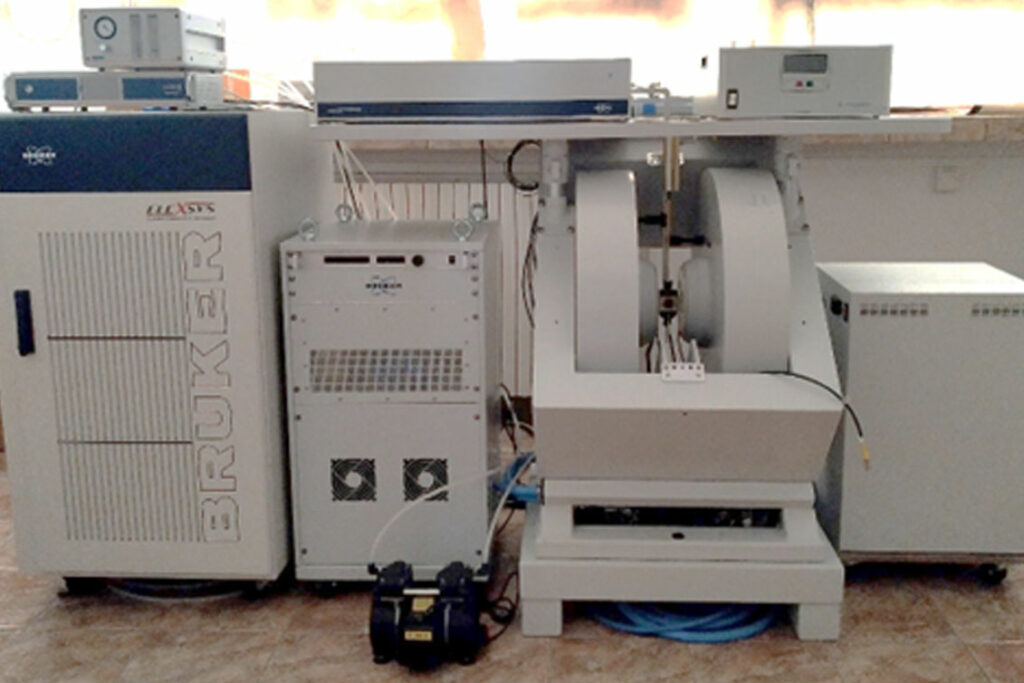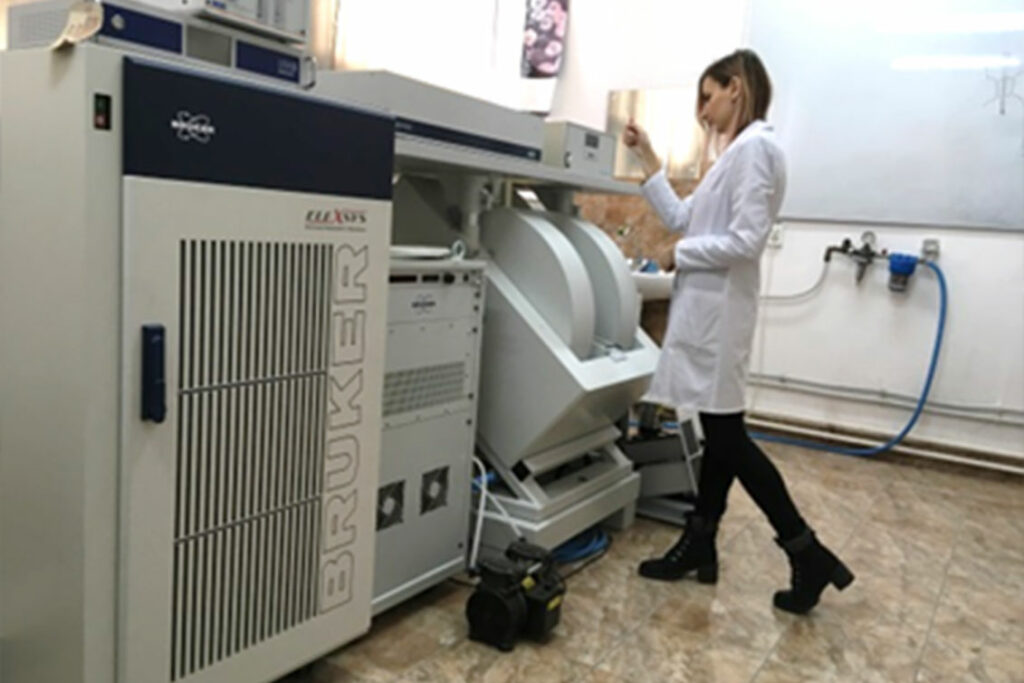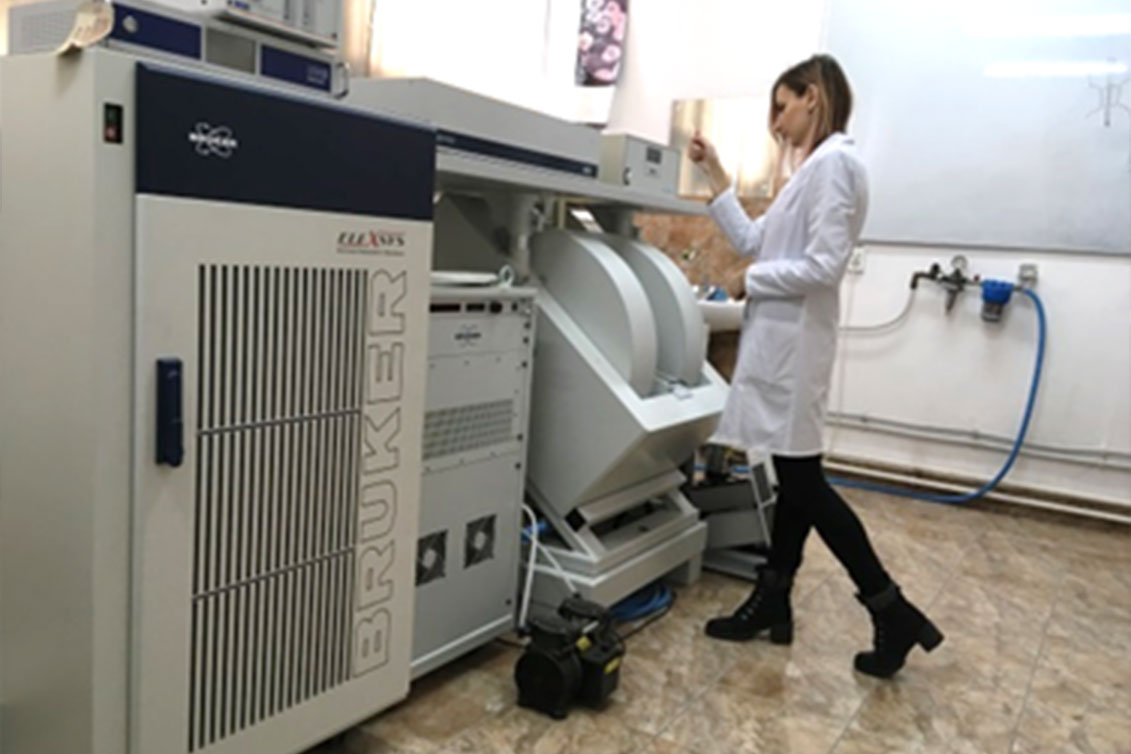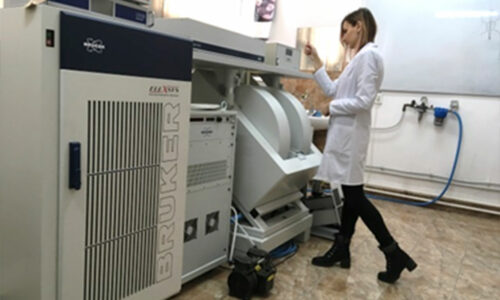Research centers
The Laboratory of EPR spectroscopy is overseen jointly by researchers from the The Center for Fundamental and Applied Heterochemistry – Metallomica, the Computer Aided Process Engineering Research Centre and the Institute of Physics “Ioan Ursu”.
The Laboratory has a list of core personnel from these research units as detailed below, in addition to postdoctoral researchers and students that operate the instruments on a temporaray basis.
Permanent team
Prof. Radu Silaghi-Dumitrescu, chemist, with direct experience in applying EPR/ESR techniques in the biomedical and materials science area.
Prof. Grigore Damian (grigore.damian@ubbcluj.ro), physicist, experienced in EPR/ESR spectroscopy techniques and methods in material physics and biophysics.
Prof. Vasile Miclăuș (vasile.miclaus@ubbcluj.ro), chemical engineer with experience in EPR/ESR spectroscopy in inorganic and organic compounds.
Prof. Augustin Moț (augustin.mot@ubbcluj.ro) is specialized in analytical chemistry, biochemistry and bioinorganic chemistry.
Prof. Raluca Mereu (Raluca.mereu@ubbcluj.ro) is a chemical engineer specialized in materials science.



Research infrastructure
The EPR laboratory`s main objective is research in the field of electron spin resonance/electron paramagnetic resonance. The target is advanced research with applications in materials science, physics, chemistry, biology, medicine, environment – using electron spin resonance/electron paramagnetic resonance (EPR, ESR), including pulsed procedures such as Electron Spin Echo Envelope Modulaton (ESEEM), 2D Hyperfine Sub-level CORrElation (HYSCORE), ENDOR, PELDOR as well as experiments at variable temperature (liquid nitrogen and helium).
A freeze-quench setup coupled with stopped-flow-UV-vis is also available for preparing samples that require fast (down to 30 ms) freezing.
Access policy and costs
Access to the facility (ELEXSYS 580 and/or EMXmicro) is free of charge. The measurements are performed by the core personnel, unless otherwise agreed with collaborators/users. For more extensive collaborations, as well as for contracts/collaborations with third parties, protocols may be negotiated regarding the operator of the instrument, types of experiments and their length, costs, and other aspects.
Contact person
Name: Prof. Dr. Radu Silaghi-Dumitrescu
Affiliation: Babes-Bolyai University, Faculty of Chemistry and Chemical Engineering, Department of Chemistry
Email: radu.silaghi@ubbcluj.ro
Website: http://www.chem.ubbcluj.ro/~rsd/
Research and publications
The main activities of the Center are research-related. Contract-based services are also expected. Any interested parts are welcome to approach the laboratory director in order to discuss either line of collaboration.
- Lehene, Maria; Plesa, Diana; Ionescu-Zinca, Stefania; Iancu, Stefania D.; Leopold, Nicolae; Makarov, Sergei V.; Brânzanic, Adrian M.V.; Silaghi-Dumitrescu, Radu. Adduct of aquacobalamin with hydrogen peroxide. Inorganic Chemistry, 2021, 60(17), 12681-12684.
- Puscas, Cristina; Moldovan, Marioara; Silaghi-Dumitrescu, Laura; Ungureanu, Lavinia; Silaghi-Dumitrescu Radu. On the apparent redox reactivity of “oxygen-enriched water”. Biological Trace Element Research, 2020, 198, 350–358. doi.org/10.1007/s12011-020-02056-4.
- Mot, Augustin C.; Coman, Cristina; Hadade, Niculina; Damian, Grigore; Silaghi-Dumitrescu, Radu; Heering, Hendrik A. “Yellow” laccase from Sclerotinia sclerotiorum is a blue laccase that enhances its substrate affinity by forming a reversible tyrosyl-product adduct. PLoS One, 2019, 0225530.
- Branzanic, Adrian; Ryde, Ulf; Silaghi-Dumitrescu, Radu. Why does sulfite reductase employ siroheme? Chemical Communications, 2019, 55, 14047-14049.
- Puscas, Cristina; Mircea, Alina; Raiu, Madalina; Mic, Mihaela; Attia, Amr A. A.; Silaghi-Dumitrescu Radu. Affinity and effect of anticancer drugs on the redox reactivity of hemoglobin. Chemical Research in Toxicology, 2019, 32(7), 1402-1411.
- Mot, Augustin C; Puscas, Cristina; Dorneanu, Sorin; Silaghi-Dumitrescu Radu. EPR detection of sulfanyl radical during sulfhemoglobin formation–Influence of catalase. Free Radical Biology and Medicine, 2019, 137, 110-115.
- Turcas, Ramona; Kripli, Balázs; Attia, Amr A. A.; Lakk-Bogáth, Dóra; Speier, Gábor; Giorgi, Michel; Silaghi-Dumitrescu, Radu; Kaizer, József. Catalytic and stoichiometric flavanone oxidation mediated by nonheme oxoiron (IV) complexes as flavone synthase mimics: kinetic, mechanistic and computational studies. Dalton Transactions, 2018, 47, 14416-14420.
- Puscas, Cristina; Radu, Luana; Carrascoza, Francisco; Mot, Augustin C; Amariei, Diana; Lungu, Oana; Scurtu, Florina; Podea, Paula; Septelean, Raluca; Matei, Alina; Mic, Mihaela; Attia, Amr A.; Silaghi-Dumitrescu Radu. The high affinity of small-molecule antioxidants for hemoglobin. Free Radical Biology and Medicine, 2018, 124, 260-274.
- Mot, Augustin C; Puscas, Cristina; Miclea, Patricia; Naumova-Letia, Galaba; Dorneanu, Sorin; Podar, Dorina; Dissmeyer, Nico; Silaghi-Dumitrescu Radu. Redox control and autoxidation of class 1, 2 and 3 phytoglobins from Arabidopsis thaliana. Scientific Reports, 2018, 8(1), 13714.
- Mot, Augustin; C.; Bischin, Cristina; Damian, Grigore; Attia, Amr A.A.; Gal, Emese; Dina, Nicoleta E.; Leopold, Nicolae; Silaghi-Dumitrescu, Radu. Fe(III) – sulfide interaction in globins: characterization and quest for a putative Fe(IV)-sulfide species. Journal of Inorganic Biochemistry, 2018, 179, 32-39.
- Dereven’kov, Ilia; Ivlev, Pavel; Bischin, Cristina; Salnikov, Denis; Silaghi-Dumitrescu, Radu; Makarov, Sergei; Koifman, Oscar. Comparative studies of reaction of cobalamin (ii) and cobinamide (ii) with sulfur dioxide. Journal of Biological Inorganic Chemistry, 2017, 22(2), 969-975.
- Bischin, Cristina; Attia, Amr A. A.; Silaghi-Dumitrescu, Radu. Chlorite reactivity with myoglobin: analogy with peroxide and nitrite chemistry? Journal of Inorganic Biochemistry, 2017, 172, 122-128.
- Hathazi, Denisa; Mot, Augustin C; Vaida, Anetta; Scurtu, Florina; Lupan, Iulia; Fischer-Fodor, Eva; Damian, Grigore; Kurtz, Jr., Donald M.; Silaghi-Dumitrescu, Radu. Oxidative protection of hemoglobin and hemerythrin by cross-linking with a non-heme iron peroxidase: potentially improved oxygen carriers for use in blood substitutes. Biomacromolecules, 2014, 15(5), 1920-1927.
- Mot, Augustin; Kis, Zoltan; Svistunenko, Dimitri A.; Damian, Grigore; Makarov, Sergei V.; Silaghi-Dumitrescu, Radu. ‘Super-reduced’ iron under physiologically-relevant conditions. Dalton Transactions, 2010, 39(6):1464-6.


